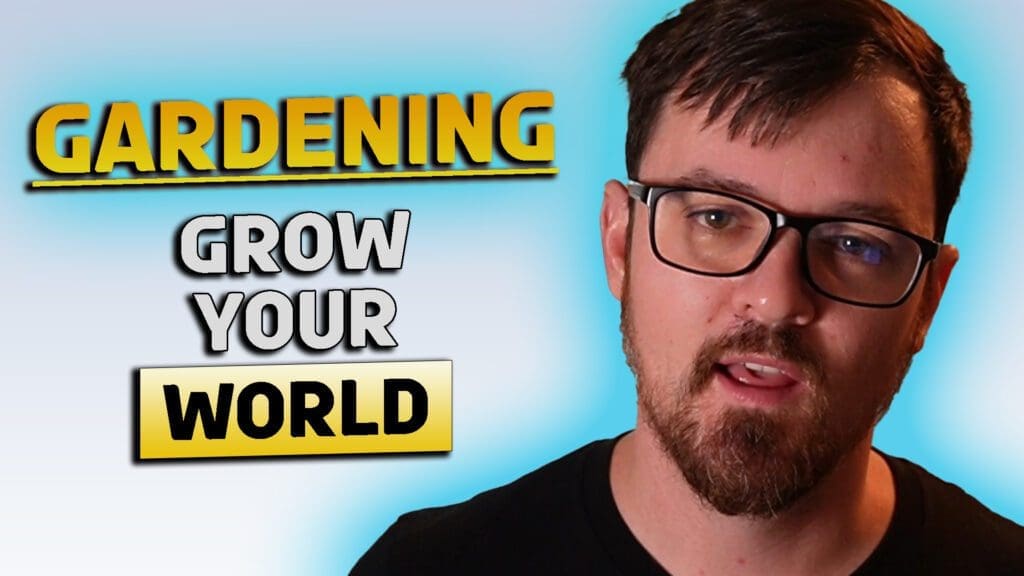We have been discussing the concepts of plotting and pantsing, two distinct styles of writing. We’ve explored how neither style is superior to the other. However, today I want to discuss what I believe to be the optimal style of writing. I refer to it as ‘gardening’, a blend of plotting and pantsing.
As I mentioned in the first blog this week, I began my writing journey as a pure pantser. Plotting has always been a challenge for me. However, the longer I write, the more I’ve come to understand that it’s acceptable to blend styles. I don’t need to commit to one and veer to an extreme. Instead, I can extract the best elements from each style to enhance my writing skills. I use the analogy of gardening to explain this concept.
Gardens are planned spaces; they don’t occur naturally in the wild. They exist only where there is intentionality, which represents the plotting aspect. Simultaneously, any gardener worth their salt will tell you that they don’t grow plants. They merely prepare the conditions conducive for plant growth. They create the garden, and the plants grow in their own unique ways. This represents the pantsing aspect.
Today, I want to break down how I approach writing novels as a gardener. Sometimes, I refer to this as the cultivation of novels. The first step in this gardening process is planting ideas. Just as a gardener plants seeds, there are a few things you need to do before you scatter the seeds and see if they grow.
Firstly, you need to select the right seeds, or in this case, the right ideas. Not all ideas are created equal. Sometimes, you need to sift through them to choose the ones with the best potential to grow into the story you want to tell. A good gardener won’t just toss them into the ground. Instead, they’ll start by preparing their soil.
I equate preparing our soil to being aware of our environment and our mental state before we start writing. Your physical and mental spaces significantly influence how your stories develop. I’m not suggesting that you need to artificially alter your environment or state of mind. Different novels require different states of mind and environments. The same writer with the same idea will produce vastly different stories if they write in a bustling city versus a secluded cabin in the wilderness. Their environment shapes the story they tell.
The second part of preparing our ideas involves understanding what kind of ‘fertilizer’ we are feeding them. A good gardener knows that depending on the time of year, the type of plant, and the location of the garden, they need different kinds of fertilizer to ensure their plants reach their full potential. Our ideas are similar. The content you consume influences your writing. The books you read, the conversations you have, and the people you allow to influence your life all play a part in how your ideas grow and how your novels turn out.
Just as a gardener pays attention to their soil and fertilizer, we, as novelists, need to do the same. We need to understand the context in which we’re writing and how our consumption affects our writing.
After we’ve planted our ideas, we need to nurture them. This is where the bulk of the work in writing a novel comes in. We’ve already roughly planned how we want our ‘garden’ to look. We’ve prepared our soil, chosen our fertilizer, and planted our idea. Now, it’s a matter of ‘watering’ it and waiting for it to grow.
‘Watering’, for me, is understanding how much structure I need to give this idea as it grows. Any good gardener knows that too much water will kill a plant, just as not enough water will. We don’t want to dry out our story, nor do we want to drown it. But after you’ve watered, you need to let it grow, let it develop in its own way. It’s this balance between the structure of plotting and the free exploration of pantsing where ideas grow optimally.
However, there’s a final step that I believe is crucial, and that is pruning. The removal of ideas that don’t work. Just as a plant needs to be deadheaded, removing the dead flowers so the plant doesn’t continue to expend energy on them, it’s important to remove bad ideas from our stories. Sometimes, we have an idea that we think is fantastic, but it leads to a dead end. If we continue to invest our energy and focus into it, our story won’t grow into the magnificent flower it could be.
I hope you can see how I’m blending plotting and pantsing with this method. At the end of the day, just like in gardening, the process of writing isn’t about adhering to one specific methodology. Instead, it’s about improving. If you’re naturally a pantser, there are definitely things that plotters do that will enhance your craft. They might be challenging, but they will improve your craft. The same holds true if you’re a hardcore plotter; there are aspects of pantsing that can really enrich your stories.
Regardless, our goal should always be to improve.

YouTube Video Link: https://youtu.be/3dwPYCD0caE
Thanks for reading and watching.
Want in on all the secrets of writing compelling books? Have burning questions for Seth about the business side of being an author? Join the email list for up to date info on the latest videos!

Leave a Reply